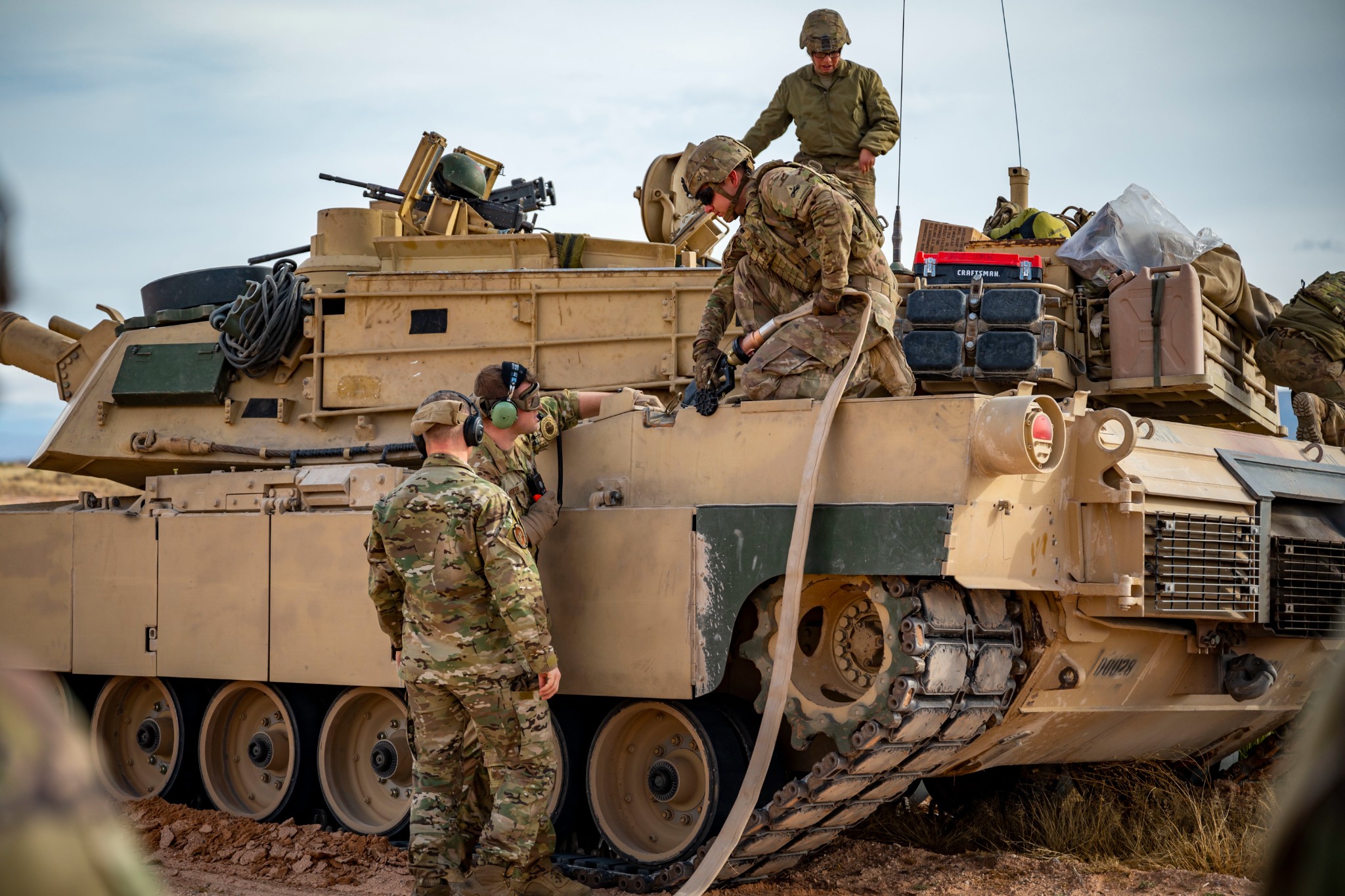 An M1A2 Abrams Tank. U.S. Air Force Photo.
An M1A2 Abrams Tank. U.S. Air Force Photo.
What the Transfer of Abrams and Leopard Tanks to Ukraine Means for the War
Wednesday’s news that the U.S. will be sending 31 M1 Abrams tanks to Ukraine, along with the announcement that Germany will send a small number of its own Leopard 2s, and allow other countries to send Leopards from their own stockpile, is good news for the Armed Forces of Ukraine. However, given the transport time and training needed, it will take a while for these tanks to enter Ukrainian service, making their arrival likely too late to be used in a spring offensive. And while the UK is also sending 14 of its Challenger 2 tanks, the star of this show is certainly the Leopard 2 on account of its ubiquity in European arsenals.
That’s not to say that the M1 transfer isn’t significant. The M1 Abrams is undoubtedly one of the best and most technologically advanced tanks in the world and its addition to the Ukrainian military will be an asset. But the highest tech versions are reserved solely for use by the U.S. military. None of the exported version of the M1 tank retain the classified high tech depleted uranium armor that protects U.S. tank crews so well. Tanks transferred to Ukraine will either have to be sourced without this armor, or have it removed in a very complicated process. A recent upgrade to some M1 Abrams that is also unlikely to see Ukrainian service is the Trophy Active Protection System, an Israeli-designed system that destroys incoming munitions before impacting the tank. In the age of guided anti-tank missiles, this system can make all the difference in the survivability of both the vehicle and its crew. But despite these technologies not being offered to Ukraine, it does appear that Ukraine will be getting the more advanced M1A2 version of the Abrams, with improved optics and electronics, rather than the older M1A1. This boils down to better targeting, better communication, and better situational awareness for the Ukrainian crews that will operate them. That the Abrams is also being sent along with M88 recovery vehicles means the U.S. intends for Ukraine to become a truly competent logistical operator of the tank. That’s a good sign, as with the right training and resources, the Ukrainians are undoubtedly just as capable operators as any other foreign country to which the M1 has been exported.
The 31 Abrams promised will outfit one Ukrainian tank battalion. This indicates that the tanks will likely be deployed as a unit. Given the maintenance requirements, weight, fuel logistics, and other considerations, Ukraine might opt to avoid using these tanks in a front-line offensive manner. Rather, they could be deployed in a more stationary defensive position, reducing the amount of wear and tear on these high value assets. In such a role, they would free more Leopards and other pre-existing Ukrainian armor to work on punching through the lines.
For now, these numbers are small and fall well short of the 300 tanks Ukraine has requested to support its combat needs. To put this number in perspective in terms of the level of combat seen thus far, if Ukraine’s (likely over-)estimates are to be believed, Russia has lost over 3,000 Russian tanks since the beginning of the war. So what difference will a few hundred tanks total make? Across the broad front, probably not much. The frontline in the Ukrainian war is simply too large for a few hundred tanks to make a big difference. However, if applied en masse in relatively narrow tactical engagements, these tanks could make a huge difference in enabling break throughs. However, in terms of these tanks being used to test the feasibility and break the fear factor of sending more, these small numbers may prove strategically significant in the long term.
With significantly more Leopards entering Ukrainian service than Abrams or British Challenger 2s, the broader maintenance and training infrastructure that will be created for their support will allow for more effective repair, rearmament, and fielding of these vehicles. Their relative simplicity compared to the Abrams means more personnel can be rapidly trained to work on and operate them. Parts interchangeability and ammunition availability will be a major factor. Up to this point in the war, Ukraine’s ability seize so much Russian equipment and ammunition that is compatible with its pre-existing stocks and weapons has been a major advantage. Damaged Russian tanks can be stripped for spare parts or put back into service. Seized ammunition caches can be used to rearm Ukrainian tanks. Those options aren’t available with western tanks, and Ukraine will become even more reliant on western support to meet its supply needs. The commonality of the Leopard 2 helps address that to a degree, but Ukraine will still be lacking a robust domestic production base for supplies.
As Western countries begin transferring their tanks to Ukraine, the significance of this move will not be particularly visible in battlefield gains at first, but rather whether these countries choose to send more. If the Ukrainians learn quickly, employ these tanks effectively, and prove their worth on the battlefield, we are likely to see western countries provide more. As a side benefit, these small initial numbers will help western countries analyze the performance of their tanks against their Russian counterparts, but that could also reveal some vulnerabilities. Ultimately, if western countries do decide to increase their tank exports to Ukraine, we could witness its growth into one of the world’s most formidable armored forces—not only on account of quality of equipment, but in quality of experience.






